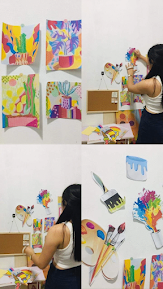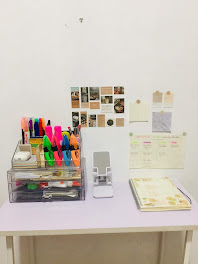I've always been a big fan of cosmetics. I used to sit and watch, enthralled, as my mother painted her nails with brilliant red polish. Then I'd beg her to make my room pink (my fave colour back then).
I was only permitted to wear that much makeup. I had a children's makeup kit, but I only used it to paint the faces of my dolls. It was so much fun.
Makeup seemed amazing back then. It had an unearthly quality to the way it could transform a face and highlight your greatest features. I couldn't wait to be old enough to put it on. I felt so grown-up when I eventually did it.
I'm still as much in love with makeup as I was when I was younger and wiser. This is why:
1. Self-Expression
Makeup, like clothes, helps me to convey my personality and moods visually. When I'm feeling romantic, I'll use pink eyeshadow and gloss. Sexy? Red lips and a soft smokey eye. Happy? Eyeshadow in a rainbow of colors or vivid fuchsia lips. Professional? No-make up make up look. And if I'm feeling like all of these things at the same time, I can adjust my appearance to match.
Makeup has the ability to transform a face and reveal who you are to the rest of the world. Isn't that incredible?
2. Boost Your Confidence
There is no magic lipstick that will transform you from an insecure little girl to a confident lady in an instant. Experience, practice, and a trust in one's own abilities and self-worth are all factors that contribute to confidence.
And I certainly don’t believe that anyone needs to wear makeup to be beautiful and worthy. You already are both, even if you may not think so right now.
But there's no denying that makeup, like clothes, has the ability to influence your mood. I always feel a little more bold, playful, and ready to try new things when I wear red lipstick or red nail polish. That sensation is one among my favorites.
3. Outlet for Creativity
Art has always been a passion of mine. I frequently visit museums and art galleries to admire paintings and sculptures. Singing and dancing are two of my favorite activities. Craftspeople who can produce magnificent stuff with their hands have my undying adoration.
But I'm not a painter. I don't have the calling, and I certainly lack the necessary talents. I can, however, apply cosmetics. It's a sort of art that everybody may enjoy. Every woman becomes, even if she doesn’t realise it, an artist when she blends her eyeshadows and swipes on her lipstick.
It's my favorite creative expression after writing. It allows me to be as creative as I want and truly represent my inner world because there are so many colors, textures, finishes, and techniques to experiment.











.jpeg)
.jpeg)
.jpeg)
.jpeg)
.jpeg)
.jpeg)














